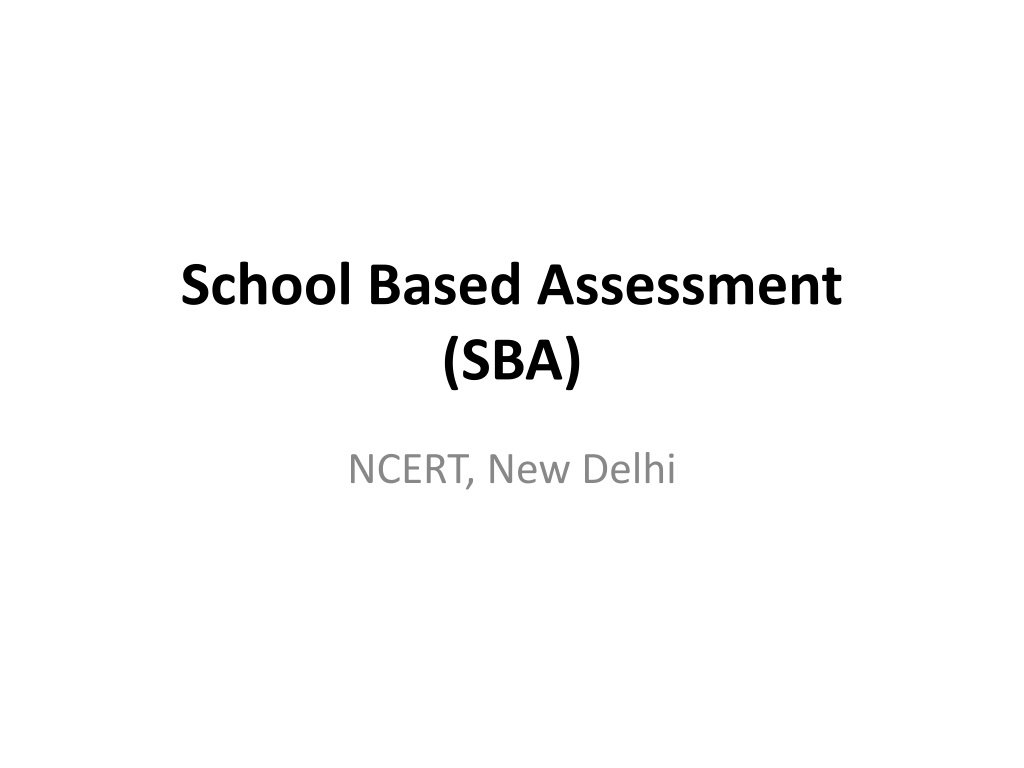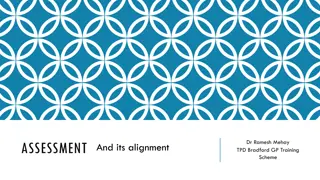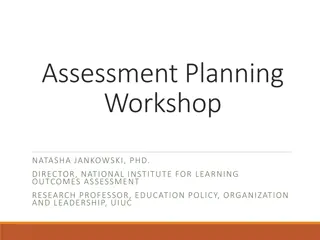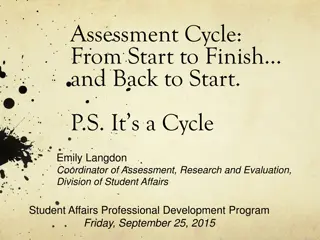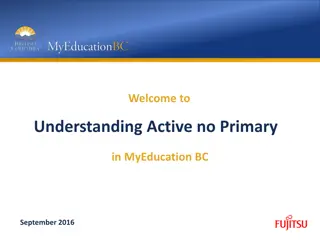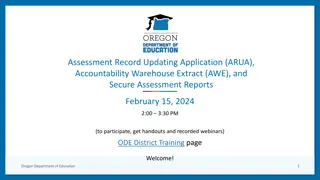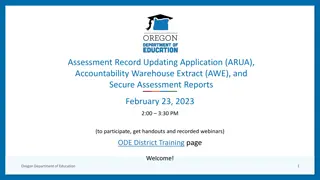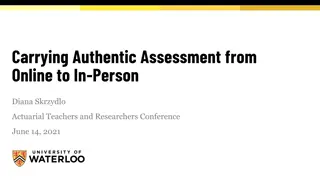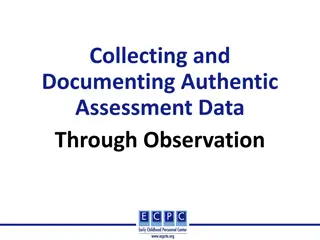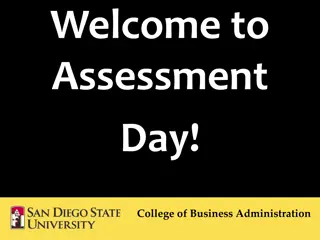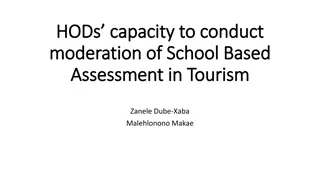Importance of School Based Assessment in Education System
School Based Assessment (SBA) is a crucial component in the education system as recommended by NCF-2005. It focuses on personalized evaluation without labeling students, identifying learning needs, and providing timely feedback for holistic progress. SBA involves multiple resources, is learner-centered, and assesses various aspects of learning. It empowers stakeholders to enhance teaching-learning processes and support students effectively.
Download Presentation

Please find below an Image/Link to download the presentation.
The content on the website is provided AS IS for your information and personal use only. It may not be sold, licensed, or shared on other websites without obtaining consent from the author. Download presentation by click this link. If you encounter any issues during the download, it is possible that the publisher has removed the file from their server.
E N D
Presentation Transcript
School Based Assessment (SBA) NCERT, New Delhi
NCF-2005 Recommendations We need to be able to shift towards school based assessment. We need to device ways in which to make such internal assessment credible. Each school should evolve a flexible and implementable scheme of CCE.
NCF-2005 Recommendations The purpose of evaluation is not to motivate children to study under threat; to identify or label children as slowlearners , or brightstudents , or problemchildren . Such categories segregate children, placing the onus for learning solely on them, and detract from the role and purpose of pedagogy; to identify children who need remediation (this need not wait for formal assessment. It can be detected by teacher in the course of teaching-learning and attended to as a part of pedagogic planning, through individualised attention); to diagnose learning difficulties and problem areas while broad indications about conceptual difficulties can be identified via evaluation and formal testing. Diagnosis requires special testing instruments and training. It is also specific to foundational areas of literacy and numeracy, and is not meant for subject areas.
School Based Assessment (SBA) Why SBA is to be undertaken? Who would assess and what is to be assessed under SBA? How should SBA be interwoven with teaching-learning process ? When should SBA be carried out? How can the information gathered from SBA be used? What is the understanding about SBA among different stakeholders?
School Based Assessment: How and When How can assessment be school based? How can assessment information under SBA be used effectively? How can SBA help different stakeholders , including all students? What would be the profile of a child reflecting holistic progress in relation to different subject areas and overall personality development? When can SBA be undertaken?
School Based Assessment :Why To decipher learning needs of students To identify learning gaps in conceptual understanding To provide timely feedback to enrich students learning Multiple resources are used to collect information Is Multiple evidence based Is learner centred Multiple aspects of learning is assessed
Features of School Based Assessment Learner centred approach to assessment Repeated many times i.e. Assessment FOR learning and Assessment AS learning. Assessment OF learning. Takes care of all round development of learners . Assessed is done formally as well informally. Guides the learner in her self assessment and facilitates the learner to take responsibility of her own learning. There is a collective learning among all concerned --- learner, teacher, parents and school ,about what is being
School Based Assessment : Why To decipher learning needs of students To identify learning gaps in conceptual understanding To provide timely feedback to enrich students learning Multiple resources are used to collect information Is Multiple evidence based Is learner centered Multiple aspects of learning is assessed :
Major Shift in Assessment Process Teacher Centered Learner Centered Learner is passive Learner is viewed as active recipient of assessment. participants . Focus is a learning Focus is on learning product and outcome. process and experiences. Focus is on knowing Focus is on strength, ability learning deficit. and needs. One slot/intermitted Continuous and approach. comprehensive approach .
Change in Approach Less Lectures Individual learning Knowing facts Short investigations Passive role in learning Getting an answer Assessing discrete knowledge Teacher as authority More Investigation of questions Collaborative learning Understanding concepts Long-term investigations Learning by doing Interpreting evidence Assessing understanding Teacher as co-constructor of knowledge
Assessment FOR Learning School based and intertwined with teaching-learning Based on multiple evidences Assesses learning process holistically Caters individual learning needs Observes progress of learning over time Helps teachers to reflect and modify teaching-learning Helps to address learning gaps
Assessment AS Learning Helps students to imbibe the ability of learning to learn Builds capacity to seek learning resources Empowers students for reflection, self assessment, peer assessment Facilitates student to connect their existing ideas with the new ideas Involves students in each stage of teaching-learning and assessment Collaborative and participatory approach to teaching - learning
Assessment OF Learning Criteria-based comprehensive assessment Multiple evidence-based assessment Reporting without labelling or comparing children Sharing learning progress with the stakeholders
Nature of Learning Learning is continuous Learning is spiral Learning takes place in holistic manner
Learners need maximum opportunities to explore their surroundings to speculate possible results to work collaboratively to report their observations to justify their viewpoints to evaluate alternative explanations to modify their opinions when presented with contrary data
Assessment: Creating Learning Environment Facilitate students to take responsibility of learning. Provide opportunity to be curious. Allow students to test out their own ideas. Encourage interaction and discussion among learners. Permit students to mess around with the materials. used for the given activity and be innovative .
Assessment: Creating Learning Environment Work collaboratively with partners/group members Engage in inquiry Active involvement in their own learning Listening to others, giving value to others opinion Handle equipment/materials responsibly Concerns for environment Think, reflect and act
Generating curiosity during Teaching-learning for Getting Familiarized with Students Existing ideas
An Example Testing an LED- various concepts that can be learnt Open circuit and closed circuit Electric currents only flow when a circuit is complete Electricity is a form of energy Electric energy can be converted to light energy Electric energy can be stored in batteries Learning Outcomes?
SBA: Reducing Burden of Teacher Encourage self assessment. Involve students in peer assessment. Don s count all assessment. Help students to maintain portfolio. Use technology .
Record of one quarter Name of the student Observation during one quarter Qualitative Remarks/de scription Quantitat ive Progress (if any) Obs-1 Obs-2 Obs-3 Obs-4 Oral expression Written Work Project Work Creative Work Portfolio, Anecdotal record, Teacher s diary, Log Book
